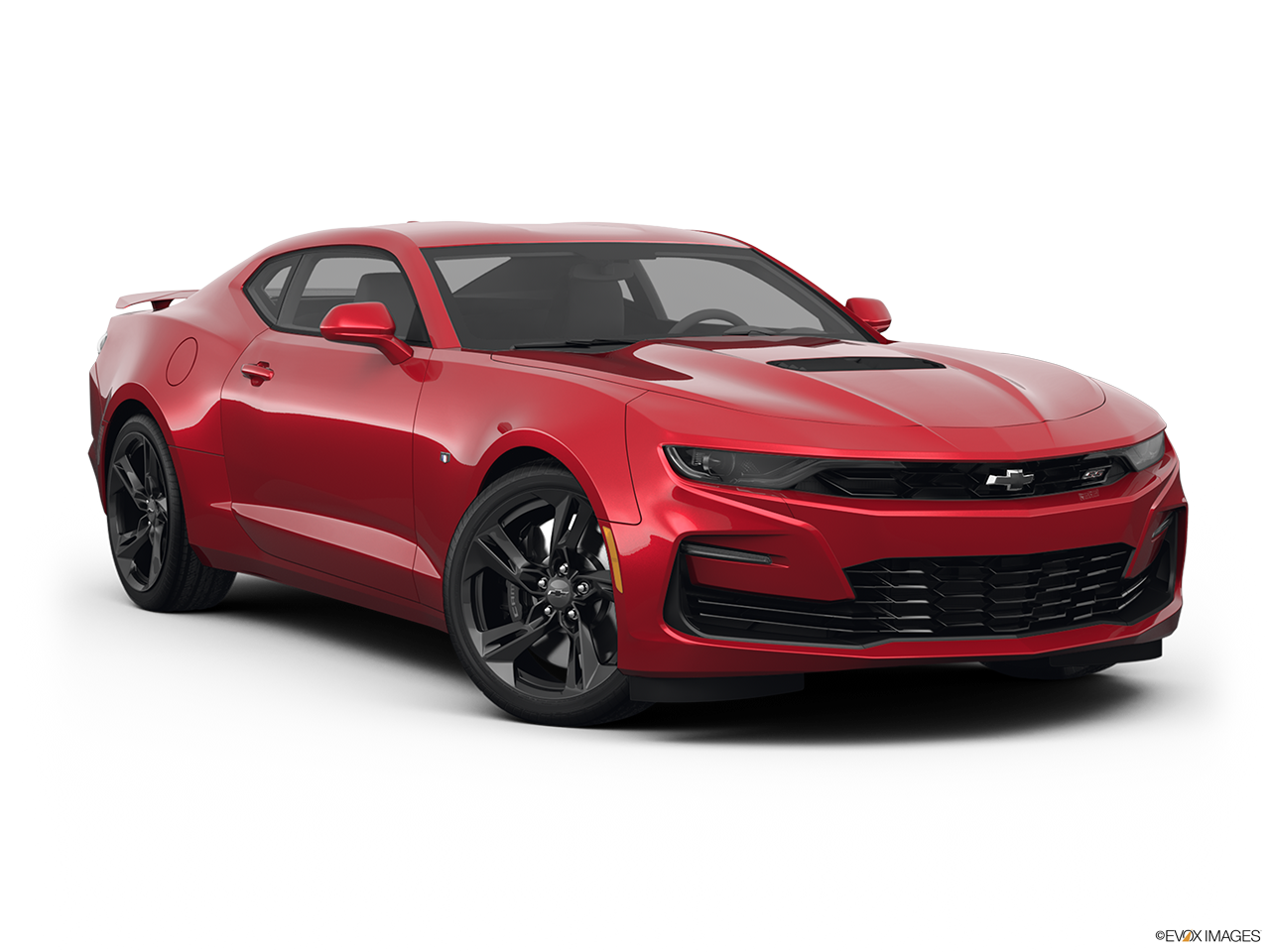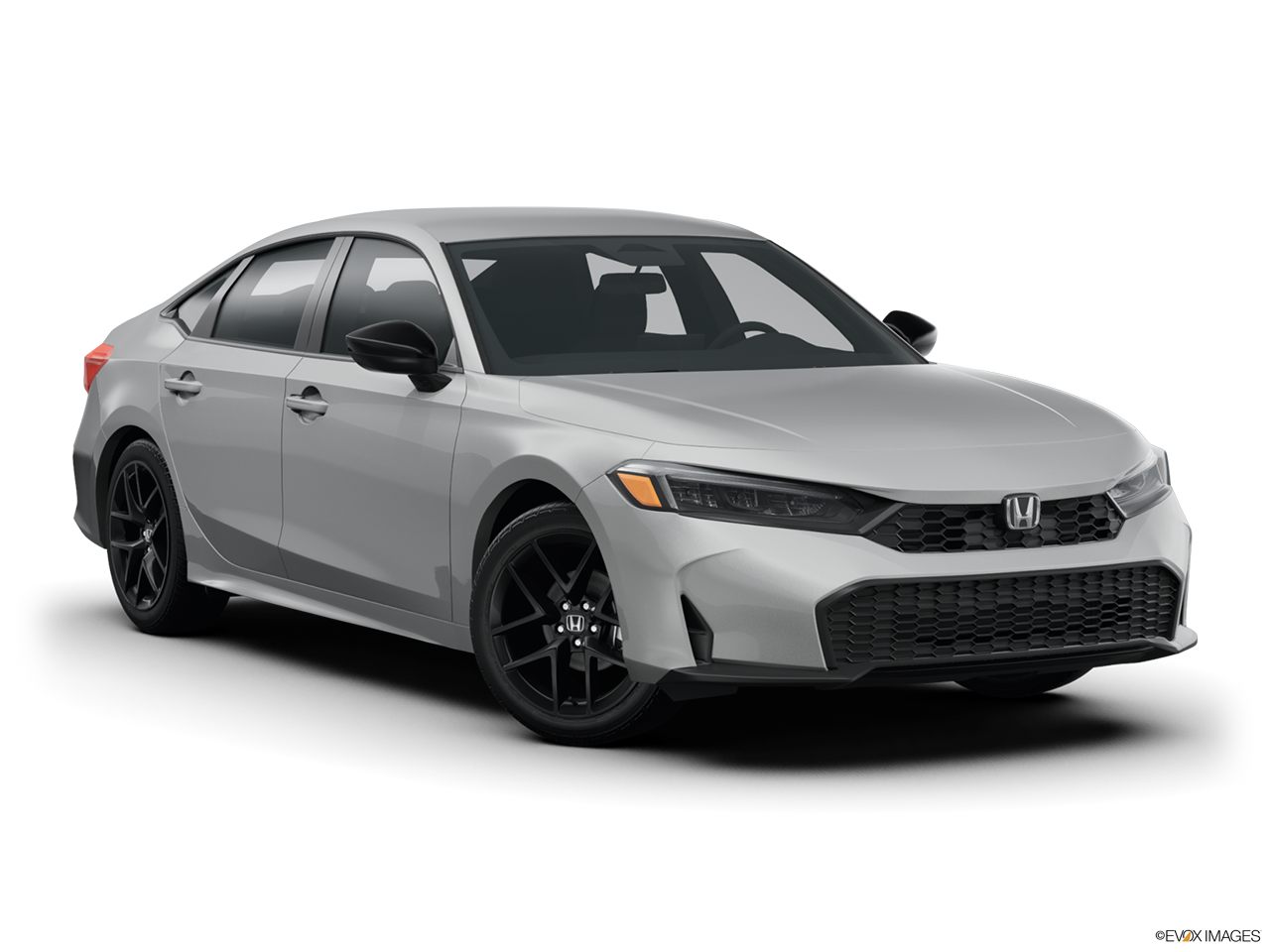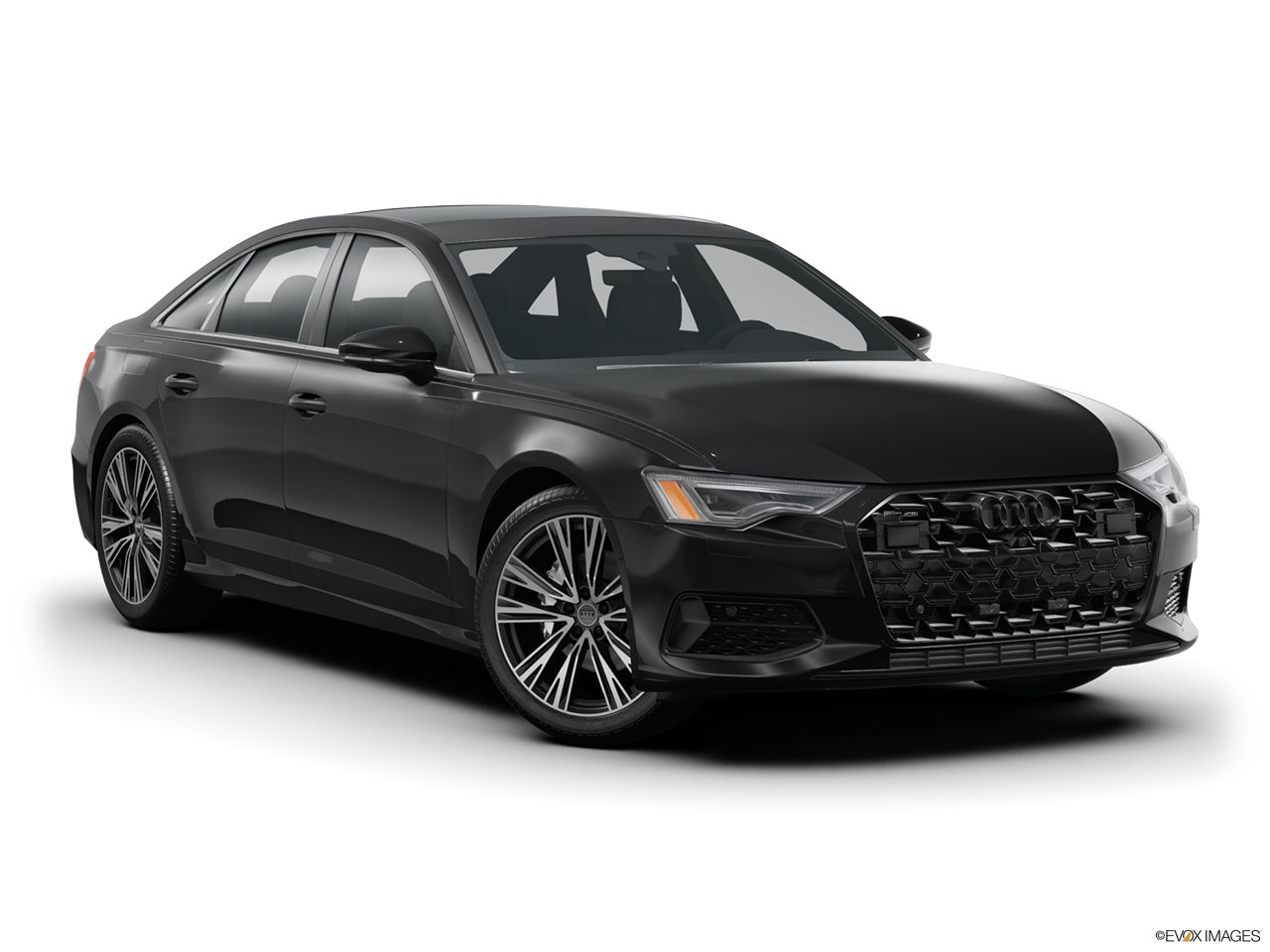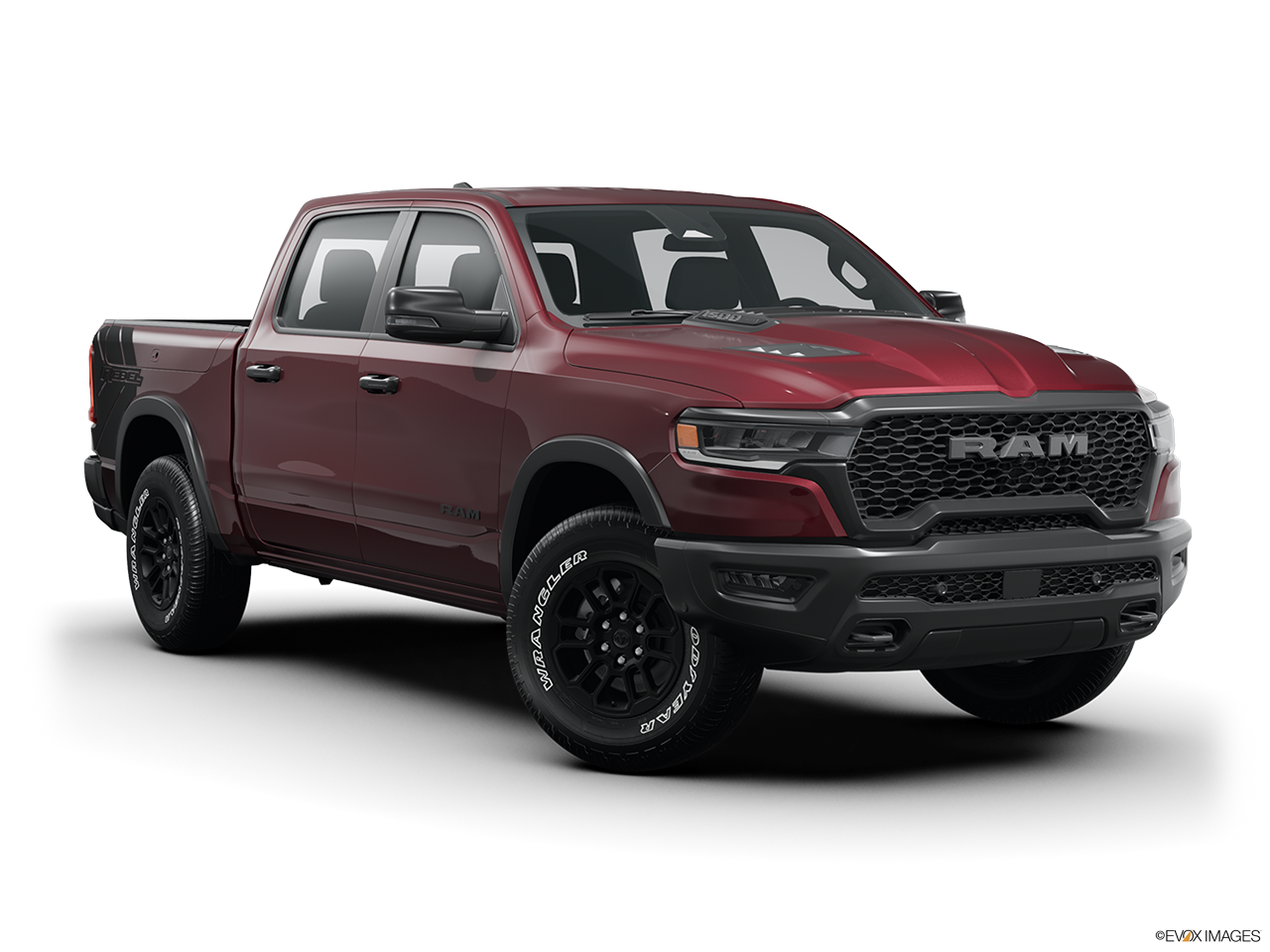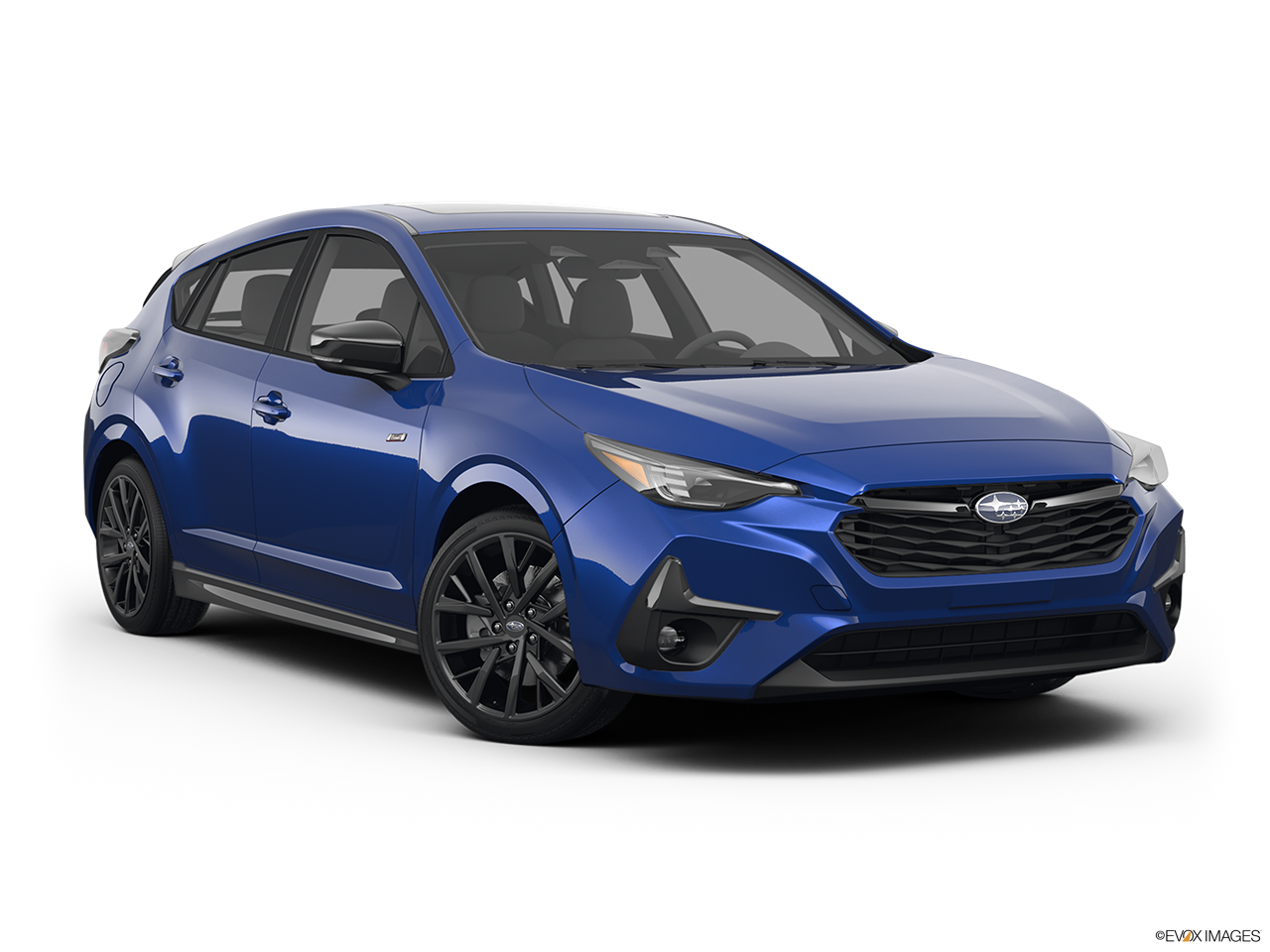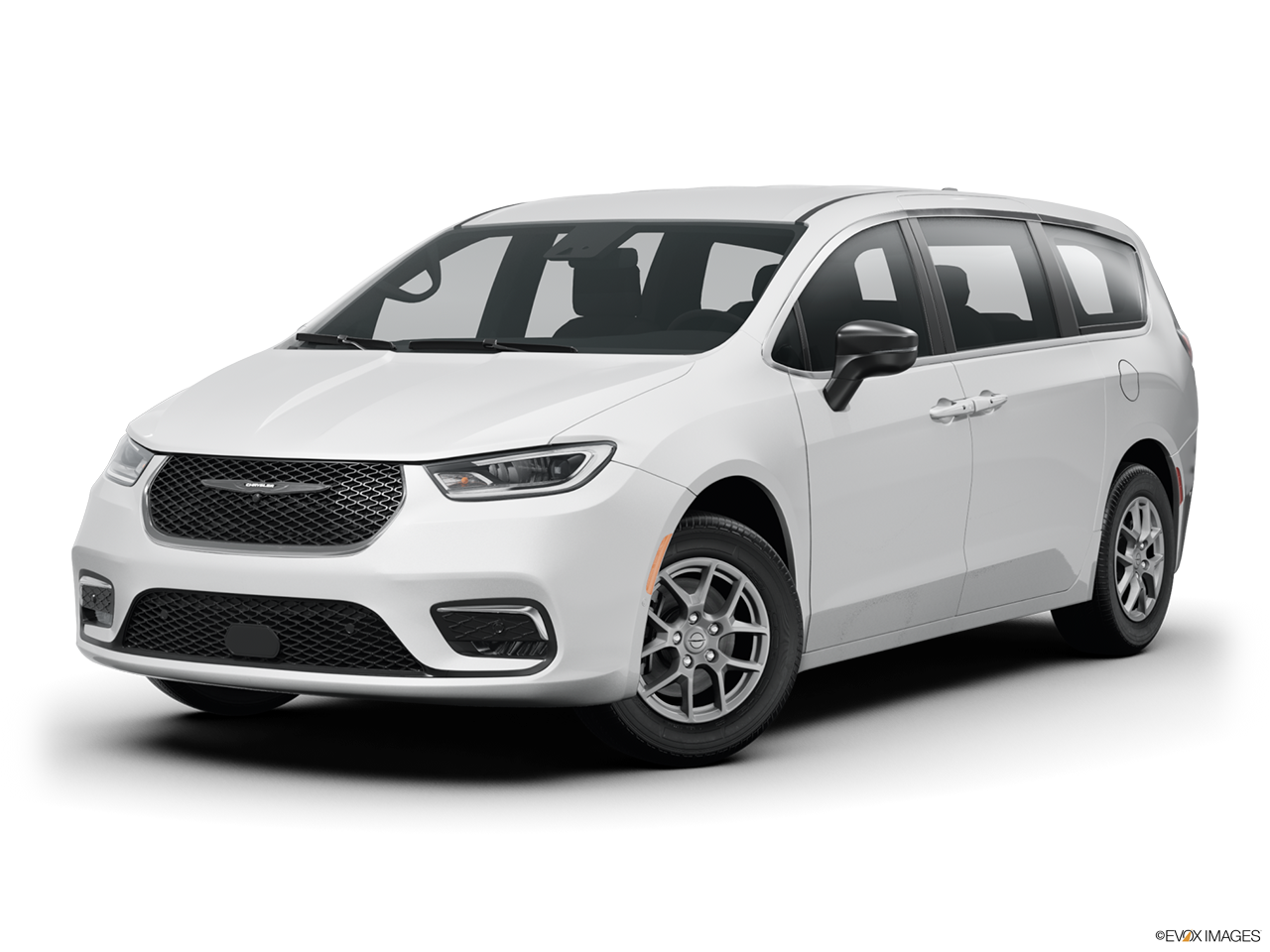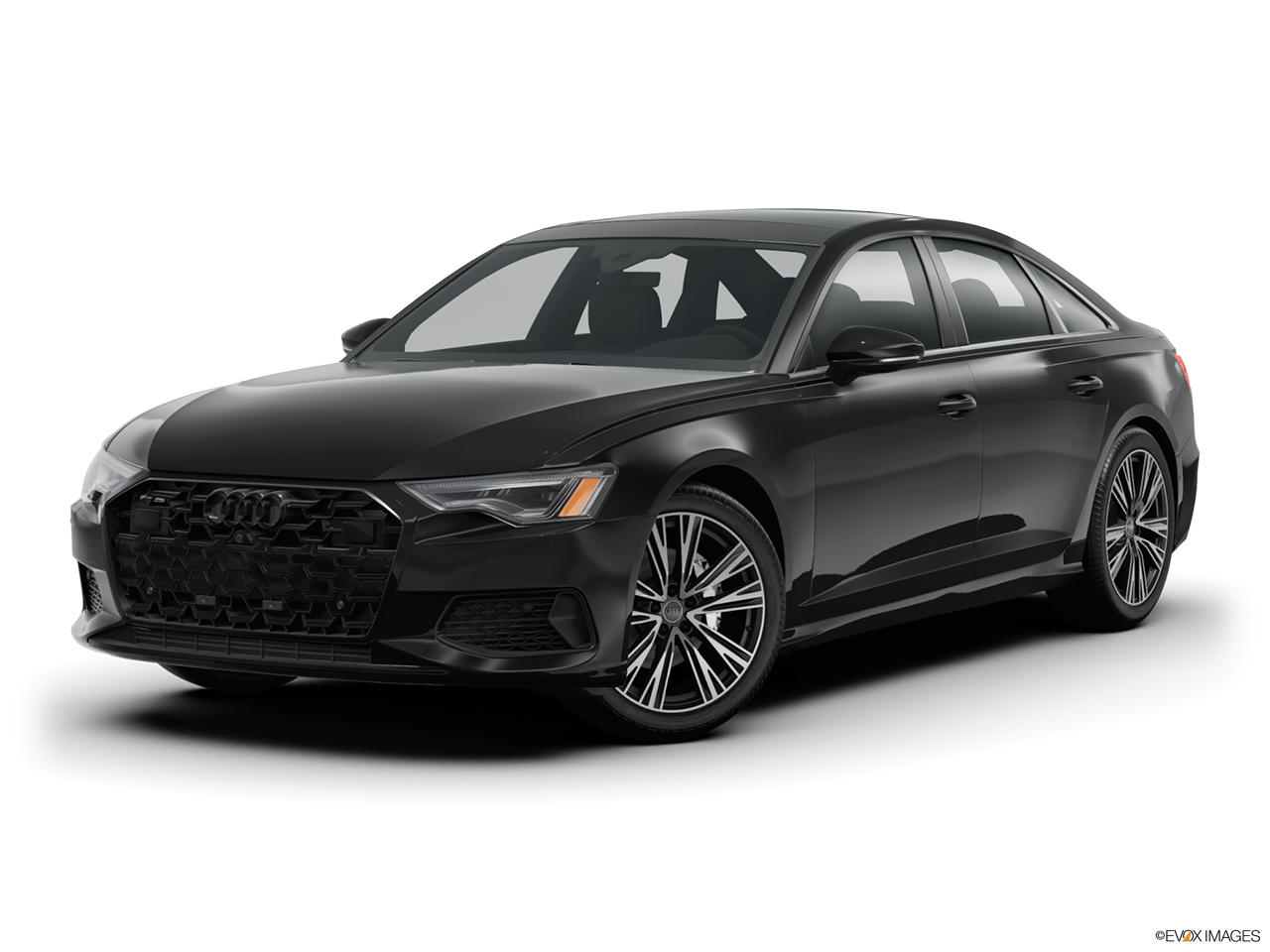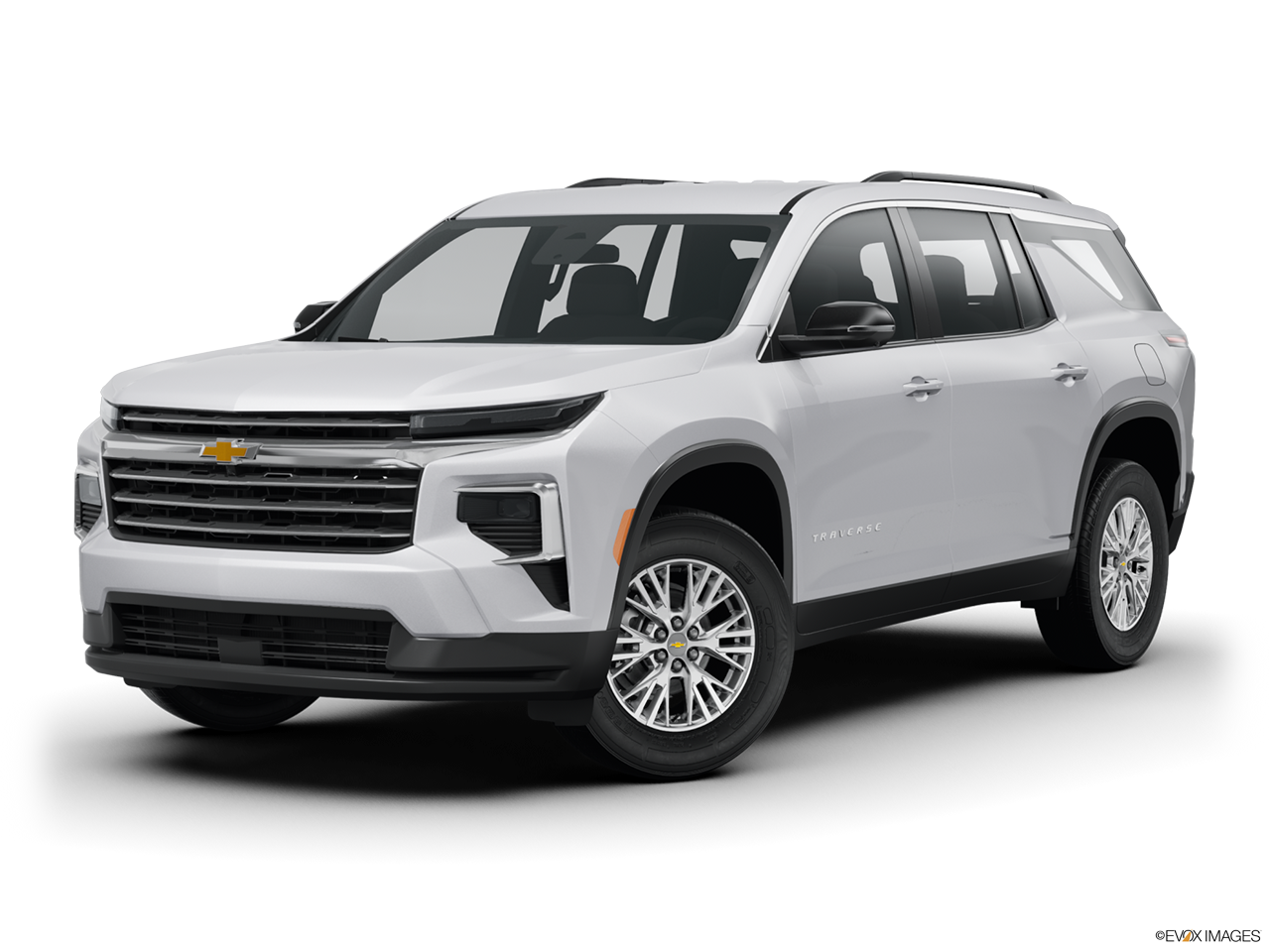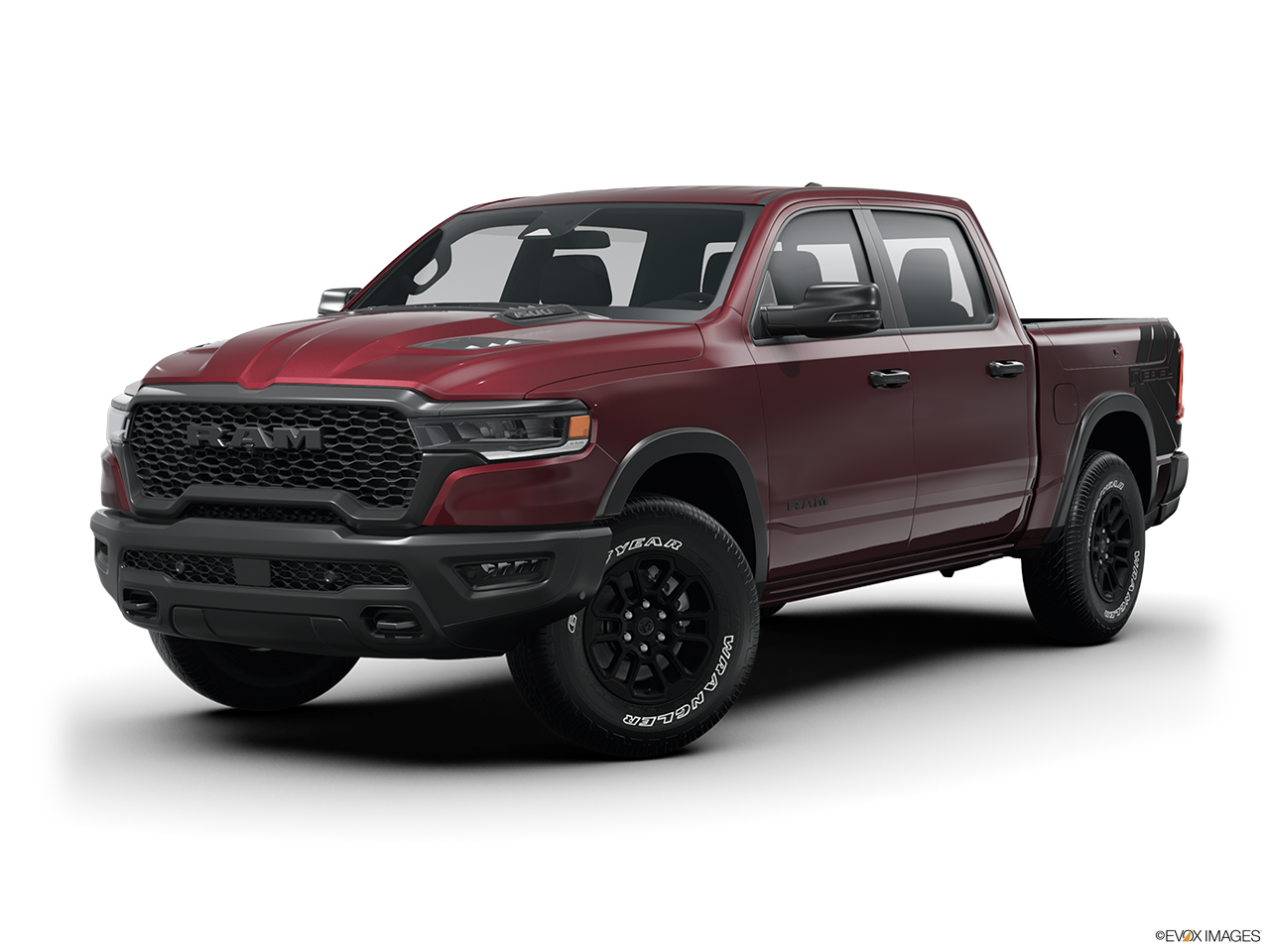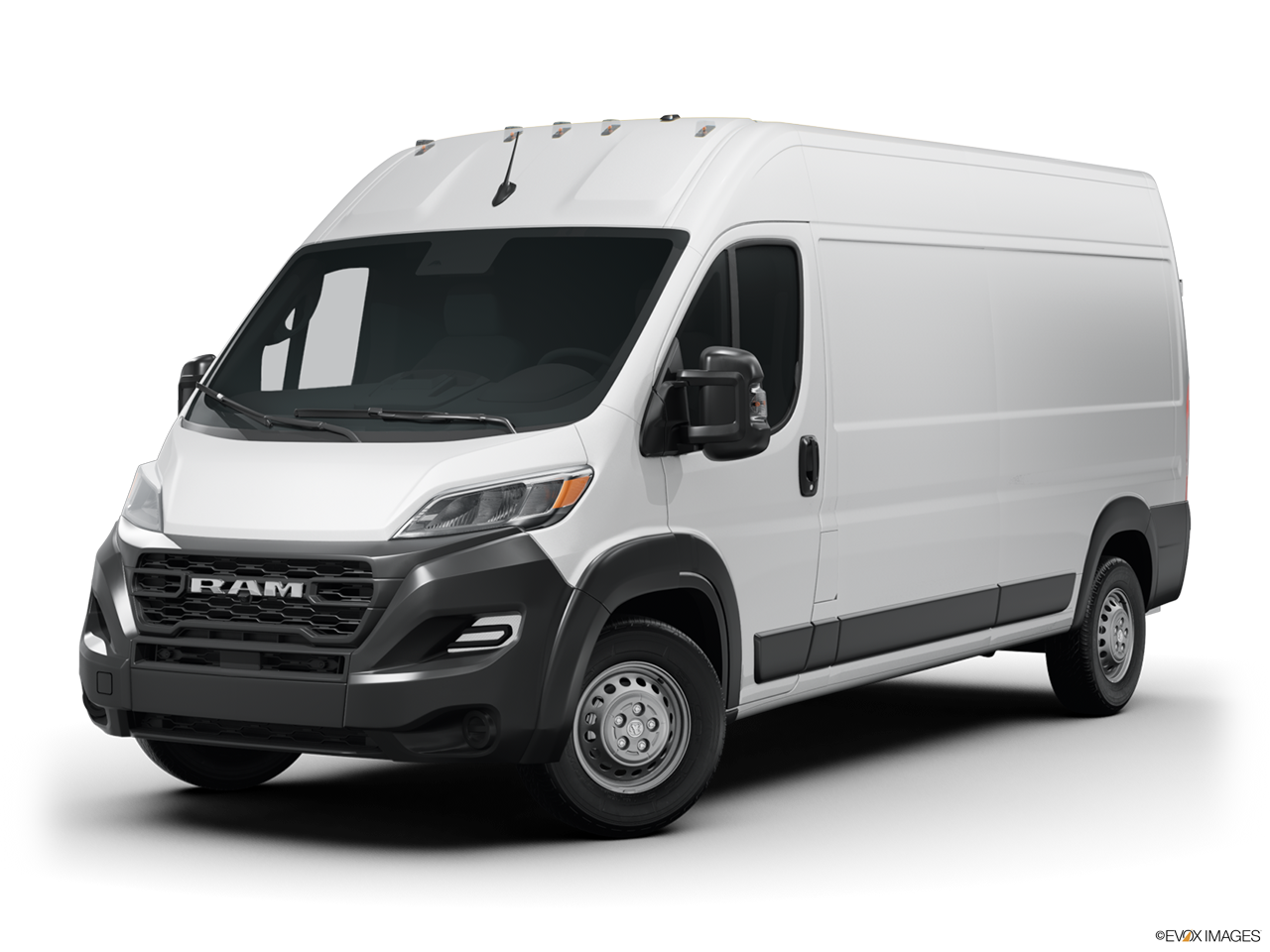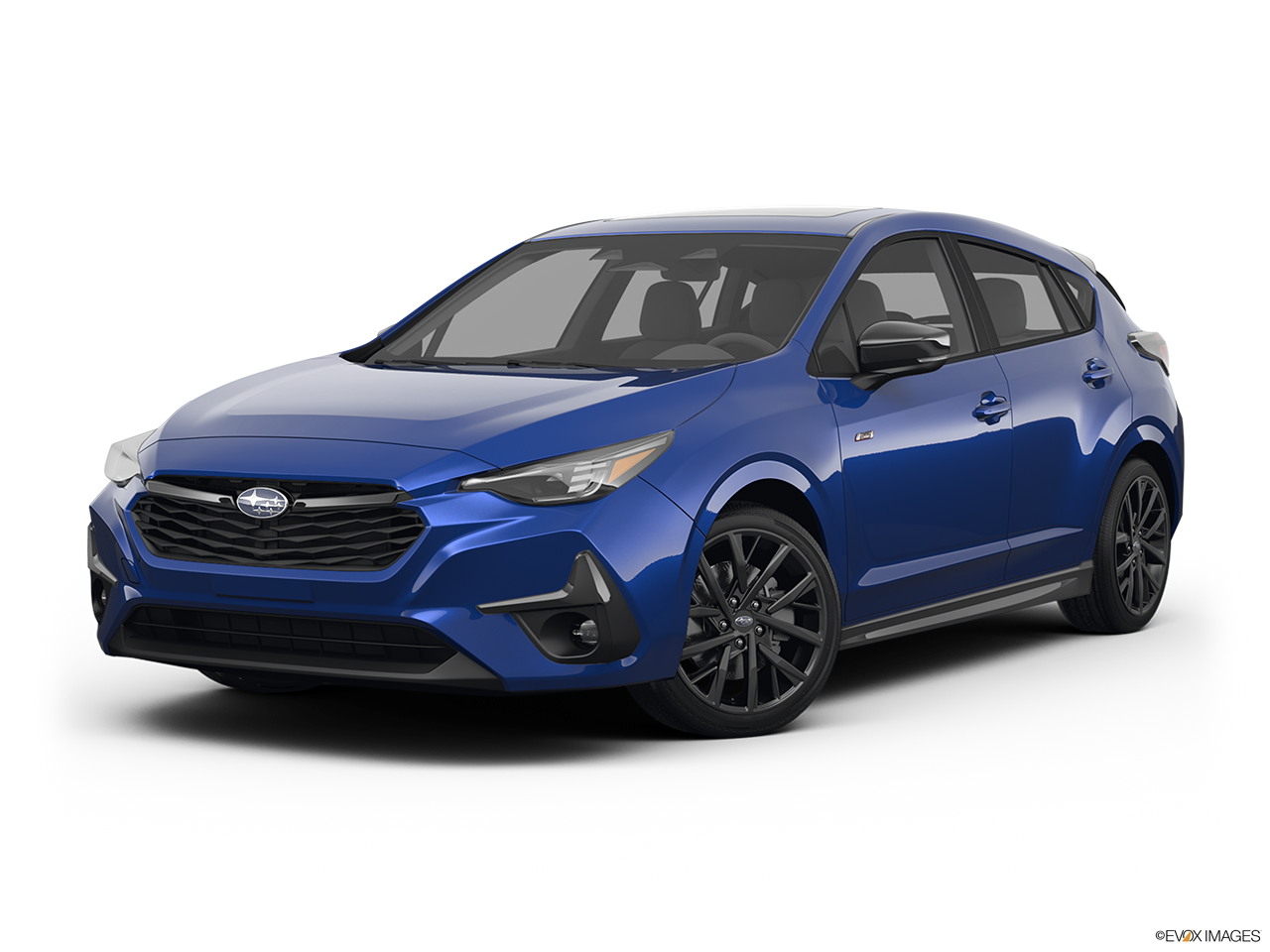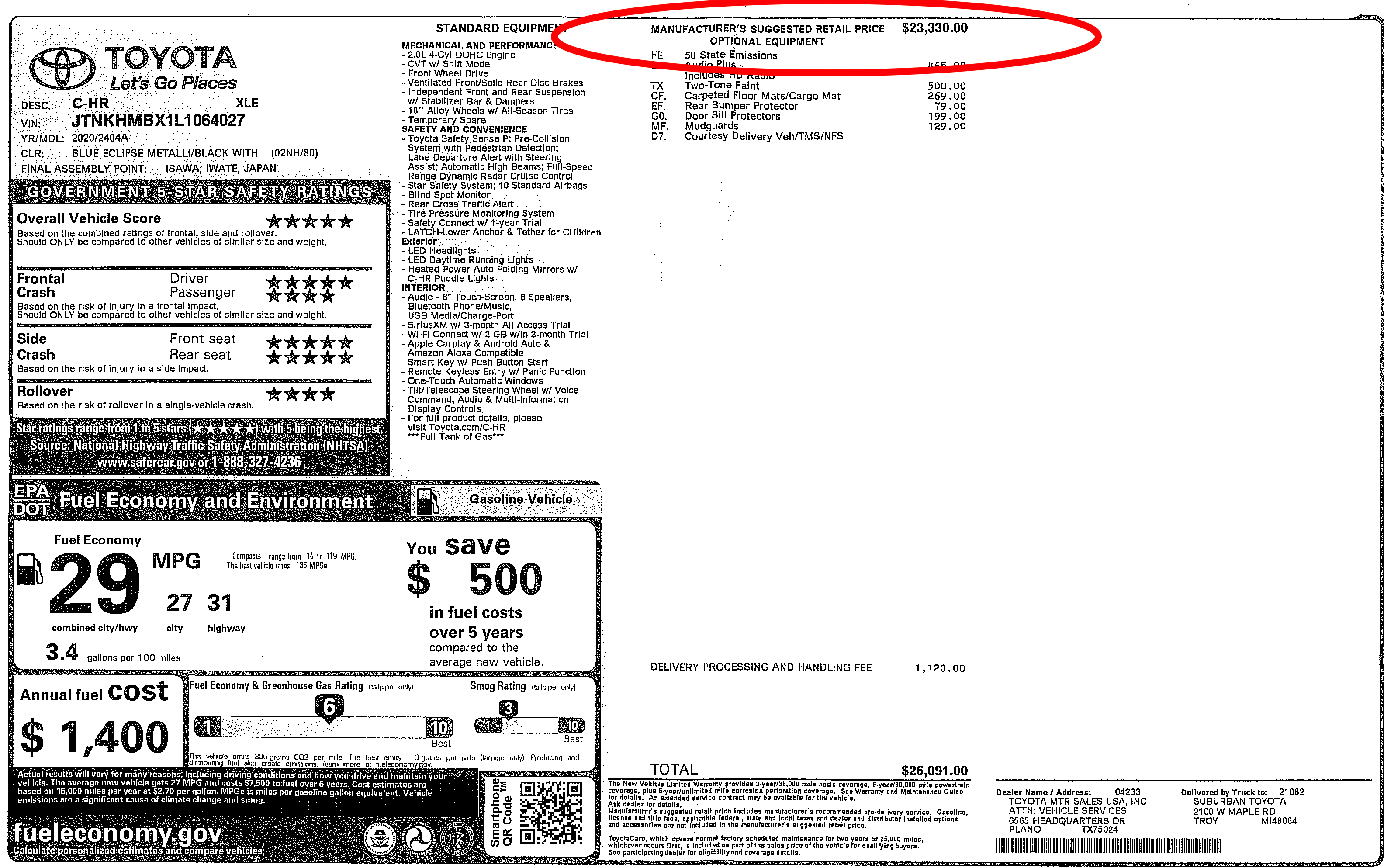Car Buyers Guide to Invoice Pricing and More
By Jakob Hansen, 10/31/2022
Everything you need to know about car pricing, all in one place.
You’ve heard all the terms, seen them while researching new cars, but what do they all mean? And how do they each specifically affect you when purchasing a vehicle?
When researching a new car, terms such as invoice price, MSRP, dealer holdback, and more are quoted. But with all the available information on the internet, it's often difficult to make sense of it all.
So let’s break down some of the common terms and questions so you can start putting them to work for you to get you the best possible price on your next car, truck, or SUV.

Invoice Price
What is Invoice Price
Invoice price is the amount that the dealer pays for each car when they purchase from the manufacturer. In other words, invoice price is the price that the dealer pays for a car.
That’s right, dealers actually buy their new car inventory from automotive manufacturers. Dealers are, in fact, a separate entity altogether.
However, invoice price is not always the final cost the dealer pays, since other fees such as destination charge also apply. A better description of invoice price would be the listed price the manufacture charges dealers for a vehicle. What the dealer actually pays may vary based on several factors.
Why Is Invoice Price Important?
Invoice price is important because it is the lifeblood of the auto industry. It is the OEM’s final cost of their product after all factors have been taken into consideration.
Consumers may not always have the ability to pay at or below invoice price due to the laws of supply and demand, but it’s still an important reference point when buying a car.
If a dealer is too far above invoice price (or MSRP, as covered below), they are charging too much for their inventory.
Knowing the invoice price in advance gives you insight into what the dealer's margins are. This allows you to start negotiations at a price that is reasonably lower than advertised.
Where to Find Invoice Price
Invoice price is often difficult to find, as dealers want to keep their cards as close to their chest as possible. However, some sites are able to provide you with what the average dealer pays for a specific vehicle model.
By choosing your desired brand via our navigation menu, you are able to see each model's MSRP and invoice price. Dig in further to a specific make and you are able to see invoice and MSRP, highest and lowest dealer price found, and the available inventory near you.
What Is The Invoice Price of a Car
The overall cost of development, productio, and distribution of a vehicle as a product is wrapped into the invoice price.
Each vehicle has its own specific invoice and while two identical cars (year, trim, color, etc) have the same invoice price overall, individual dealer incentives may mean that dealers in locations may be charged differently by the OEM.
Dealer Cost vs Invoice Price
The dealer cost is the complete amount that the dealer paid for a vehicle from the time it arrived on the lot, to when the vehicle is sold. The longer a vehicle sits on the lot, the higher the dealer cost will go.
Invoice price and dealer cost refer to very similar items. However, dealer cost is the overall amount the dealer spent to sell a vehicle. This includes what they paid for the vehicle (invoice price), plus any additional fees the dealer has taken on the vehicle such as lot plan interest, additions to the vehicle such as paint protection, conditioning or accessories, as well as the costs for the employees that have interacted with the car, from the salesman down to the porter.
Dealers “purchase” their inventory from the manufacturer in bulk, and have exclusive rights to being the only ones allowed to buy and sell new car inventory.
Keep in mind that dealers do more than only sell new car inventory. They also have exclusive rights to selling OEM products, parts and accessories, service on the vehicles, and performing warranty work. They are the experts in their brand and there is far more value in the dealer than simply acting as a “middle man”.
Invoice price is often used in other transactions as well, always referring to the price the manufacturer charges the supplier.
How to Pay Invoice Price
While it’s possible to pay invoice price, it shouldn't be expected. There are several factors that go into setting the invoice price, and when you buy a car at or below invoice, the dealer loses a significant amount of money.
Typically, this means that the sale of the car is more important to the dealer than making an immediate profit.
This can be the case from several circumstances.
- The car has sat on the lot for an extended period of time or the car is a less desirable model. Cars that no one wants to buy, be that because of paint color, features (or lack of features), or any other number of reasons, means the dealer is willing to take a hit on the vehicle. Any time a car sits on the dealer's lot for too long it costs them money. After a while, the dealer is going to be more likey to take a lower asking price in lieu of moving the car.
- The vehicle is part of the dealer's "lot plan" and selling the vehicle may actually get them a higher return from the OEM.
Another key role in getting a vehicle below invoice is timing. Buying a vehicle at the right time plays a huge role in the pricing. The end of the month is a good time to start. Even better, the end of the quarter. And the best time is the end of the fiscal year. The dealer has a quota to fill, and if they are below quota, they are going to be willing to take a loss on a vehicle to move it.
Pro-tip: Automotive manufacturers reward dealers with cash incentives for hitting their quotas. Rewards are keyed to month-end, quarter-end and year-end sales numbers. Aim for these times to buy.
Model year changeover plays a role as well. When the next year's models start hitting the lot, the interest for this year's cars drops. If the dealer has last year's model sitting on the lot, it will be harder to sell. Particularly if there was a major refresh in the model. If the 2020s are "all-new" over the 2019s, demand will be high for the 2020s and the 2019 will be a prime candidate to get below invoice price.
Keep in mind invoice price is set for the dealer, not you. Buying a car above invoice price does not necessarily mean you are getting a bad deal.
MSRP
What is MSRP
MSRP stands for Manufacturer Suggested Retail Price. It is the recommended asking price an automaker sets for each vehicle. Dealers use MSRP to price the vehicles on their lot.
MSRP is always higher than invoice price.
What is MSRP Used For?
Dealers use MSRP to set the price of their vehicles. Dealers are not required to use MSRP and independently price each vehicle, though MSRP is referenced and the asking price typically remains as close to MSRP as possible to stay competitive in the market.
For the consumer, knowing MSRP provides a fair estimate of the car's worth.
Invoice VS MSRP
Invoice price and MSRP are closely related, however, represent different figures. Invoice price refers to the cost of the vehicle to the dealer. MSRP is the OEM’s suggested price for the vehicle.
Invoice price is lower than MSRP, as it is what the manufacturer charges the dealer, while MSRP is the suggested amount for the dealer to charge the customer.
How to Pay MSRP or Below MSRP?
MSRP typically is the starting point for negotiations, and it is often possible to pay below MSRP. The biggest factor to consider is the demand for the vehicle of interest. If demand is high, the chances of paying below MSRP are unlikely.
The same factors for paying below invoice price also play a role with MSRP. Time of year, length of time on the dealers lot, and model inser
On a vehicle that has been on the lot for an extended period of time, is less likely to sell, or there are several vehicles that optioned similarly, the chances are high to pay below MSRP.
What Does MSRP Include?
MSRP includes the price of the vehicle, features and options equipped on the vehicle, and any factory installed options.
MSRP does not include tax, title, registration, destination charge, dealer fees, or any dealer installed options.
Can a Dealer Charge More than MSRP?
Yes, dealers are able to charge more than MSRP for their new car inventory. However, for a dealer to stay competitive, they must keep competitive prices. If a dealer is charging too much for their vehicles, consumers will simply not buy a car from that dealer.
There are also laws that protect the consumer from dealers price gouging and taking advantage of situations.
Sticker Price
What Is Sticker Price?
Sticker Price is the final price listed on the Monroney sticker (window sticker). The sticker price includes MSRP, dealer ad-ons, destination fee, and any other factors that go into final price.
Sticker price does not include tax, title, and registration.
Fair Market Value
What is Fair Market Value
Fair market value represents how much a vehicle is worth in the current market. This included things such as vehicle demand, scarcity/availability, and other factors. Fair market value is not a set figure such as invoice price or MSRP, and fluctuates depending on the conditions of the market.
For most new vehicles, fair market value doesn't come into play. Typically fair market value is used as a reference for rare vehicles or pre-owned cars. For your typical sedan or SUV, the fair market value usually holds somewhere between invoice and MSRP.
Dealer Holdback
What is Dealer Holdback?
Dealer holdback refers to a percentage of the overall price of a car that the dealer receives back from the manufacturer. Dealer holdback is an offset to help compensate for some of the costs associated with storing and selling a vehicle, and is not typically involved in negotiations between dealer and consumer.
As a car buyer, you will almost never interact with dealer holdback, and it does not affect the overall cost of your vehicle, as it is a return to the dealer from the manufacturer based on the MSRP of the vehicle.
Conclusion
Knowing what the dealer paid, you can make a FAIR offer on a car. Making a FAIR offer puts you at a DISTINCT advantage over any other customer, and the dealer is much more likely to work with you and give you a fair deal.
Entering the negotiating process with a clear idea of what the dealer paid gives you the advantage of knowing what a fair deal is.
We typically recommend to aim to buy between MSRP and invoice price. To be above either, however, is not necessarily a bad deal. Always keep in mind vehicle demand, time of year, and dealer inventory.
Dealers aren’t making a ton of money on each vehicle sold, much of their profit is made from financing, service, and accessories.
Start your car buying experience with a FAIR offer by knowing MSRP and invoice before heading to the dealer.
Considering pre-owned? Interested in financing? Carvana has options for you! With Carvana, you can finance your vehicle with competitive rates, and can even utilize a co-signer! All of Carvana’s vehicles are inspected and reconditioned by technicians and have no reported fire, frame, or flood damage according to CARFAX™ and AutoCheck®. Click Here to get pre-qualified with Carvana.
|
|
Jakob is our writer with a love for all things automotive. He comes from a dealer background with experience on both sides of the fence. Knowing the system inside and out, he knows the best cars and the best deals. No matter what. |

